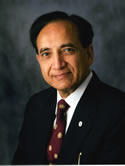| Abstract: |
A number of studies have demonstrated that when a digit or limb is amputated, the somatosensory receptive fields in the cortex expand. Cortical adaptive responses to amputation of the digits and limbs are predicated on the biomechanics of these structures, and their use in a variety of different voluntary sensorimotor behaviors. What are the cortical adaptive responses, then, when the tongue is resected? The tongue is a muscular hydrostat with biomechanical characteristics considerably different than the digits or limbs. Moreover, the tongue is used for both voluntary (speech) and automatic motor behaviors (swallowing). Our purpose in this preliminary investigation was to examine the cortical responses to surgical resection (partial glossectomy) of the tongue in human patients. Six adult patients with partial glossectomy for tongue carcinoma and twelve healthy adult human subjects were imaged using Functional Magnetic Resonance Imaging techniques. Subjects were imaged on a 1.5T GE MR system using conventional BOLD techniques. Compared with healthy subjects, the partial glossectomy patients demonstrated increased activation (p<0.05) most prominent in the somatosensory cortex and parietal cortex as well as the hippocampus. The results of this investigation demonstrate changes in cortical activity in the control of tongue movement following partial surgical resection of the tongue similar to those observed with digit/limb amputation, suggesting cortical mechanisms of adaptation that are independent of the effector. |







